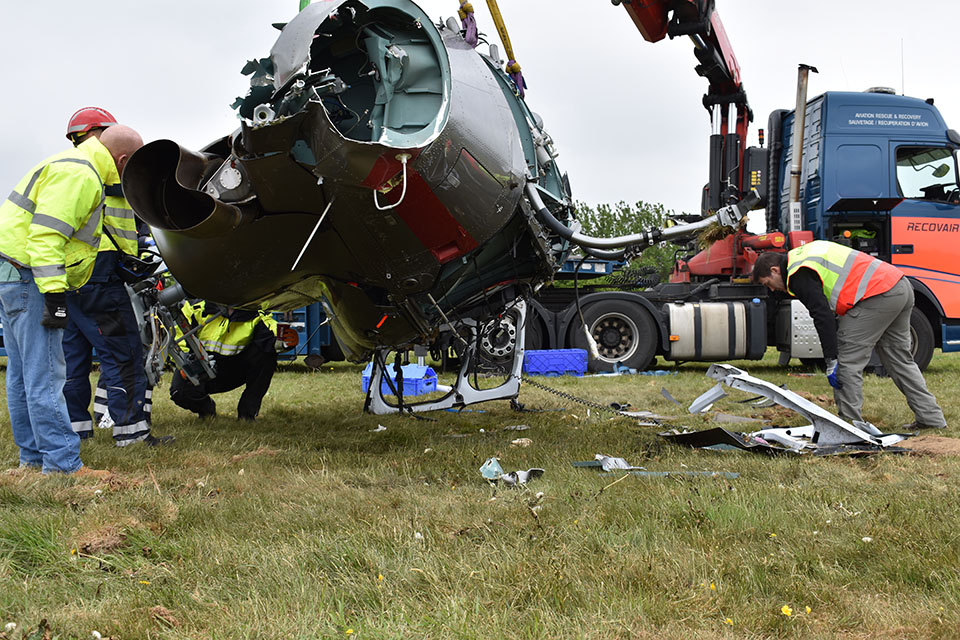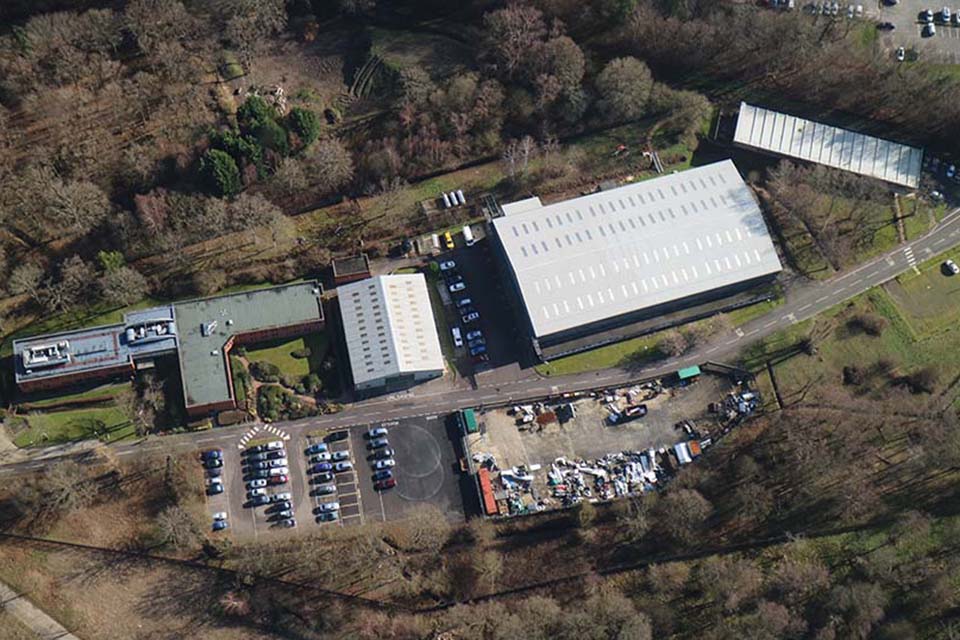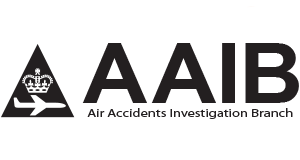How we investigate
Published 7 June 2018
How we investigate
Each year, we receive 500-700 notifications of air accidents and incidents. We send teams of inspectors to accident sites 30 to 40 times per year and conduct more than 200 investigations by correspondence each year. The correspondence investigations vary in the level of detail depending on the nature of the accident. A report of an accident to a light aircraft, with no fatal or life threatening injuries to the pilot or passengers, may be completed following a brief questionnaire that the pilot returns to us. A correspondence investigation into a serious incident involving a commercial aircraft can be more involved, for instance including the recovery of flight data recorders and analysis of evidence in our laboratories. On average, correspondence investigations are published around three months from the date of an incident.
Field investigations
Our inspectors are from four main disciplines: operations, engineering, recorded data and human factors. For a field investigation, typically we send a small team of inspectors (at least two) selected from these disciplines to the accident site or to the location of the aircraft following a serious incident. Engineering support staff typically attend accident sites to provide guidance on hazards and to recover aircraft wreckage. For larger accidents, we send multiple inspectors from each discipline and they are supported by additional administrative and engineering support staff.
Site phase: 2-3 days (smaller sites) to 7 days (more complex sites)
Our inspectors’ priority is to document and preserve evidence to try to understand the initial circumstances of the accident. They examine the physical evidence including both the aircraft and details such as ground marks and collecting fuel samples, and talk to witnesses while their recollection is still fresh. During the site phase, our inspectors also gather information that might not be located at the accident scene, such as training records, flight plans, aircraft logs or maintenance records. Flight data recorders and cockpit voice recorders are recovered or, for light aircraft accidents, electronic devices such as smart phones, tablets and GPS units are taken as they may provide helpful clues to understand what happened and why.
The site phase is only the start. Once everything has been documented and photographed, and witnesses have been contacted, the wreckage is usually recovered and transported to our facility in Farnborough.

Aircraft being recovered from site.
Detailed enquiries
In our hangars at Farnborough, aircraft wreckage is laid out for a detailed examination. This can range from conducting tests in our workshops on-site, through to more complex procedures such as metallurgy testing, flight simulator sessions or commissioning specialist test pilot flights to reconstruct and better understand the circumstances that led to an accident.

Aerial view of the AAIB Headquarters in Farnborough.
Using our flight data recorder laboratory, one of few facilities of its kind in the world, our flight data recorder inspectors will do everything possible to recover data from flight recorders or other electronic equipment. Devices are often damaged or contaminated, so before work can start on recovering data, they need to be slowly dried out in a special oven or the circuit boards and chips repaired under a microscope. Our inspectors also collect other electronic evidence, such as radar and radio recordings from air traffic providers.

An inspector working in the flight data recorder laboratory.
As evidence is gathered and analysed, further witness interviews may be conducted to understand emerging lines of enquiry. Throughout the investigation, our human factors inspector may provide input and advice, going beyond the pilots and looking at all the human interactions and organisational influences that may have contributed to an accident, whether those be in the immediate lead-up to an accident or further back in time. This phase of an investigation can take several months for an accident involving a light aircraft and potentially more than a year for a major accident. If any urgent safety issues arise, we publish a ‘Special Bulletin’ during an ongoing investigation. These are also used to communicate the initial findings of a major accident investigation within 30 days, in line with international protocols.
At any time during an investigation, Safety Recommendations can be issued to address the safety issues. The investigation will usually work with the various parties and encourage safety action to prevent recurrence.
Consultation
When we have analysed the evidence, drawn conclusions and are making safety recommendations, a draft report goes through several stages of internal review within the AAIB. We are then required to issue a confidential draft report to those States that have been involved in the investigation and also those whose reputation may be affected by our report. Under the UK regulations this consultation lasts for 28 days. Representations made by those consulted are given due consideration before the publication of the final report.
Publication of reports
Most field investigation reports are published within 12 months of an accident occurring. Investigations involving the major loss of an aircraft are more complex and reports can take longer to publish. For these investigations updates are provided at least on an annual basis. All of our reports are published on our website.

